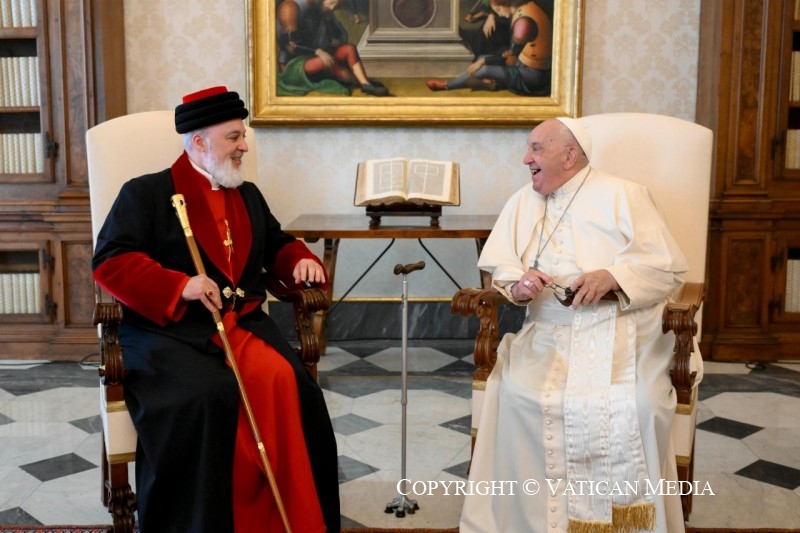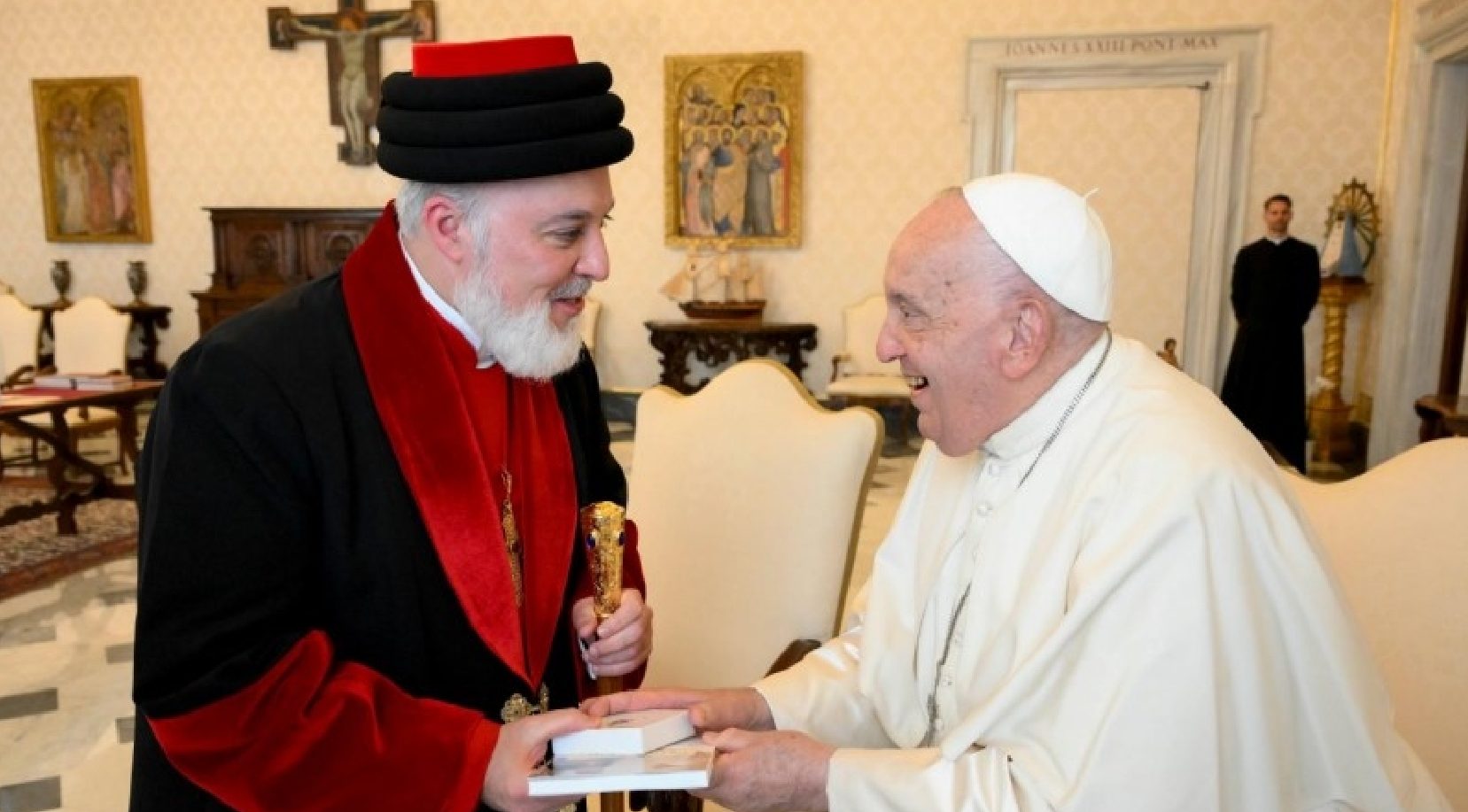(ZENIT News / Vatican City, 11.10.2024).- On Saturday 9 November 2024, the Holy Father Francis and His Holiness Mar Awa III, Catholicos Patriarch of the Assyrian Church of the East, celebrated together in the Vatican the 30th anniversary of the Common Christological Declaration between the Catholic Church and the Assyrian Church and the 40th anniversary of the first visit to Rome of an Assyrian Patriarch.
The Joint Christological Declaration, signed on 11 November 1994 by Saint John Paul II and Catholicos Patriarch Mar Dinkha IV, put an end to 1.500 years of Christological controversy dating back to the Council of Ephesus (431).

His Holiness Mar Awa III was accompanied by the members of the Joint Commission for Theological Dialogue between the Catholic Church and the Assyrian Church of the East, which was established by the same Declaration and which has recently initiated a new phase of dialogue on the liturgy in the life of the Church.
On this occasion, the Holy Father announced the inclusion in the Roman Martyrology of St Isaac of Nineveh, also known as Isaac the Syrian, one of the most venerated Fathers of the Syro-Oriental tradition.
Isaac of Nineveh, a monk and bishop in the second half of the 7th century, belonged to the pre-Ephesian tradition, i.e. the Churches of the Assyrian-Chaldean tradition. Born in present-day Qatar, where he had his first monastic experience, he was ordained bishop of Nineveh, near present-day Mosul (Iraq), between 676 and 680, by the Catholicos of Seleucia-Ctesiphon, George I. After a few months as bishop, he asked to return to monastic life and retired to the monastery of Rabban Shabur in Beth Huzaye (in present day southwestern Iran). There, he composed several collections of ascetic-spiritual discourses that made him famous.

Despite belonging to a Church that was no longer in communion with any other, because it had not accepted the Council of Ephesus of 431, Isaac’s writings were translated into all languages spoken by Christians: Greek, Arabic, Latin, Georgian, Slavonic, Ethiopian, Romanian and others. Isaac thus became an important spiritual authority, especially in monastic circles of all traditions, which quickly venerated him among their saints and fathers.
The inclusion of Isaac the Syrian in the Roman Martyrology proves that holiness did not stop with separations and exists across denominational boundaries. As the Second Vatican Council declared: ‘It is right and salutary to recognize the riches of Christ and virtuous works in the lives of others who are bearing witness to Christ, sometimes even to the shedding of their blood.’ (Unitatis Redintegratio 4). St. John Paul II, for his part, declared that “the communio sanctorum speaks louder than the things which divide us” (Tertio Millenio Adveniente 37) and that “in a theocentric vision, we Christians already have a common Martyrology” (Ut Unum Sint 84).

The recent Synod on Synodality also recalled that ‘the example of saints and witnesses to the faith of other Churches and Christian Communions is a gift we can receive by including their memory in our liturgical calendar’ (Final Document 122).
It is hoped that the inclusion in the Roman Martyrology of Isaac of Nineveh, a witness to the precious Christian spiritual heritage of the Middle East, will contribute to the rediscovery of his teaching and to the unity of all Christ’s disciples.
Thank you for reading our content. If you would like to receive ZENIT’s daily e-mail news, you can subscribe for free through this link.



